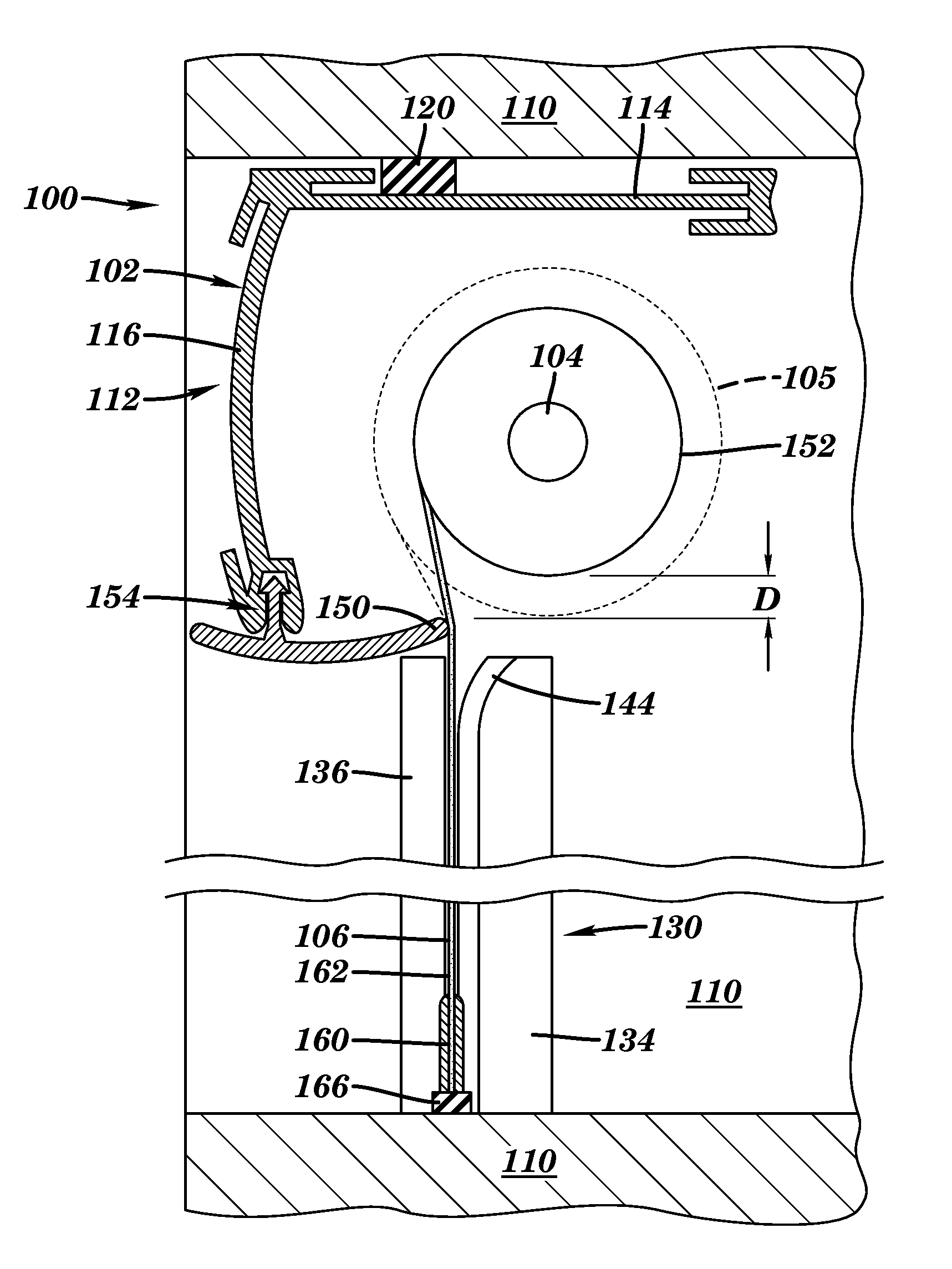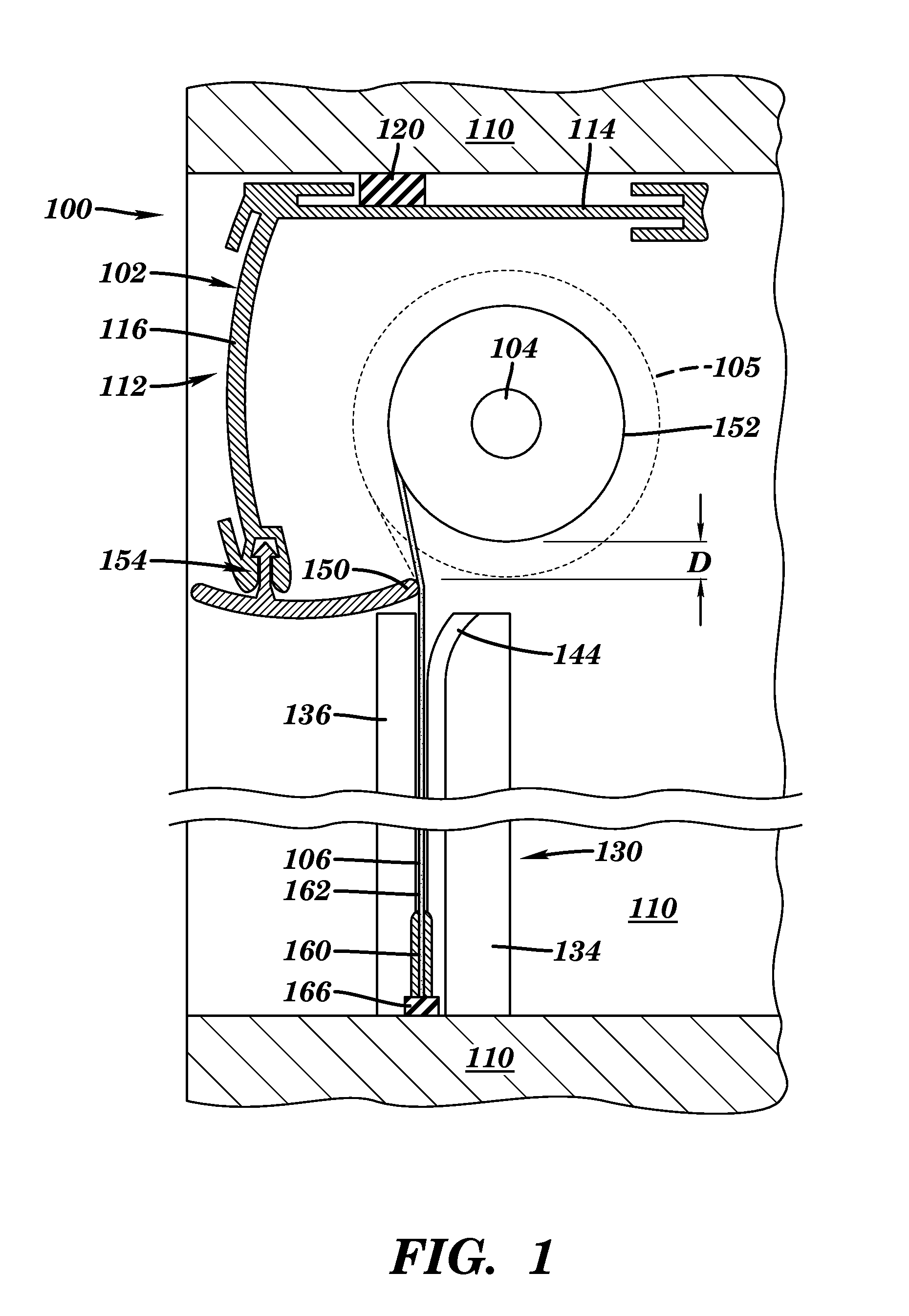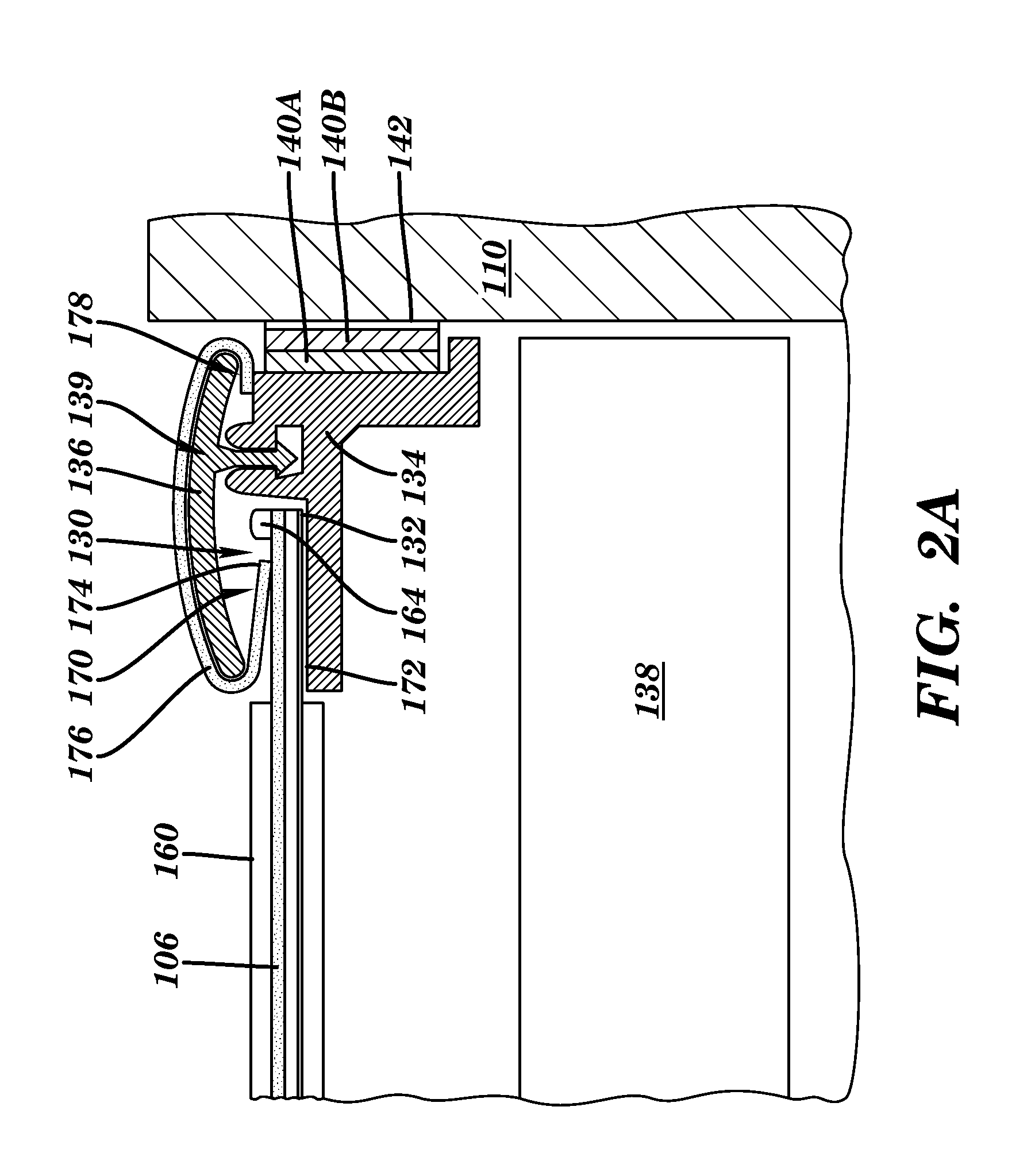Window shade assembly with re-channeling system, two-part side channels and single seal strip of wrapping material
a window shade and rechanneling technology, applied in the field of window shades, can solve the problems of only partial light control, thin single-layer nature of rollable fabrics and films, and no significant thermal benefit,
- Summary
- Abstract
- Description
- Claims
- Application Information
AI Technical Summary
Benefits of technology
Problems solved by technology
Method used
Image
Examples
Embodiment Construction
[0031]As indicated above, embodiments of the invention provide a window shade assembly that acts as an effective and active insulating and light-blocking member on a window, with the aesthetic benefits (including image display on a flat surface when deployed) and the ease of installation and operation of a conventional roller shade. As used herein, the term “window” may include any ventilation and / or light emitting opening in a structure of any kind.
[0032]Referring to FIG. 1, a partial cross-sectional view in a vertical plane through a window shade assembly 100 according to embodiments of the invention is provided. Window shade assembly 100 includes a headrail 102 including a roller core 104 wrapped with a flexible shade material 106. Headrail 102 may include any frame structure of hard material such as plastic or metal for mounting window shade assembly 100 to a surrounding frame 110 that defines the window for which window shade assembly 100 is to be used. As illustrated in FIGS. ...
PUM
 Login to View More
Login to View More Abstract
Description
Claims
Application Information
 Login to View More
Login to View More - R&D Engineer
- R&D Manager
- IP Professional
- Industry Leading Data Capabilities
- Powerful AI technology
- Patent DNA Extraction
Browse by: Latest US Patents, China's latest patents, Technical Efficacy Thesaurus, Application Domain, Technology Topic, Popular Technical Reports.
© 2024 PatSnap. All rights reserved.Legal|Privacy policy|Modern Slavery Act Transparency Statement|Sitemap|About US| Contact US: help@patsnap.com










